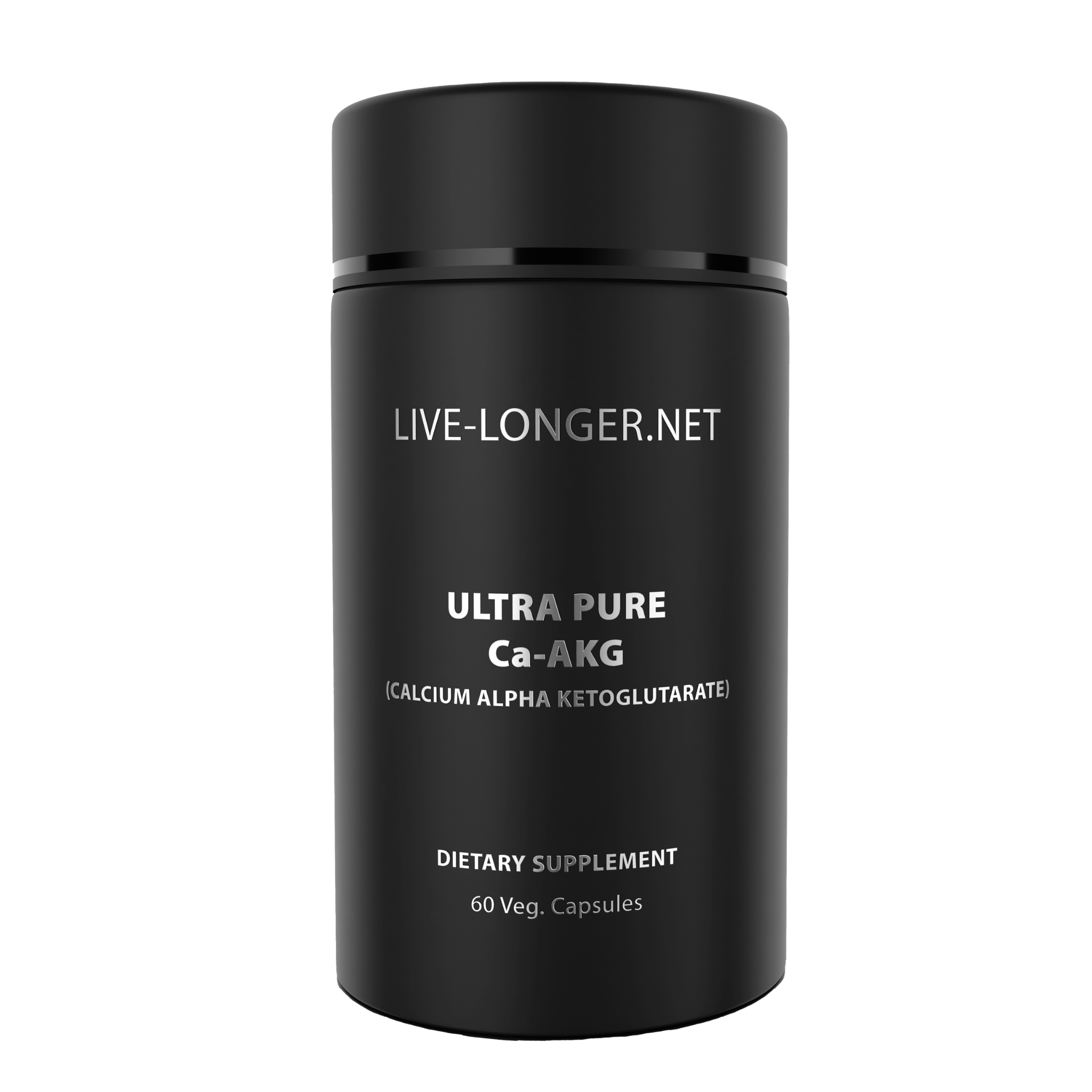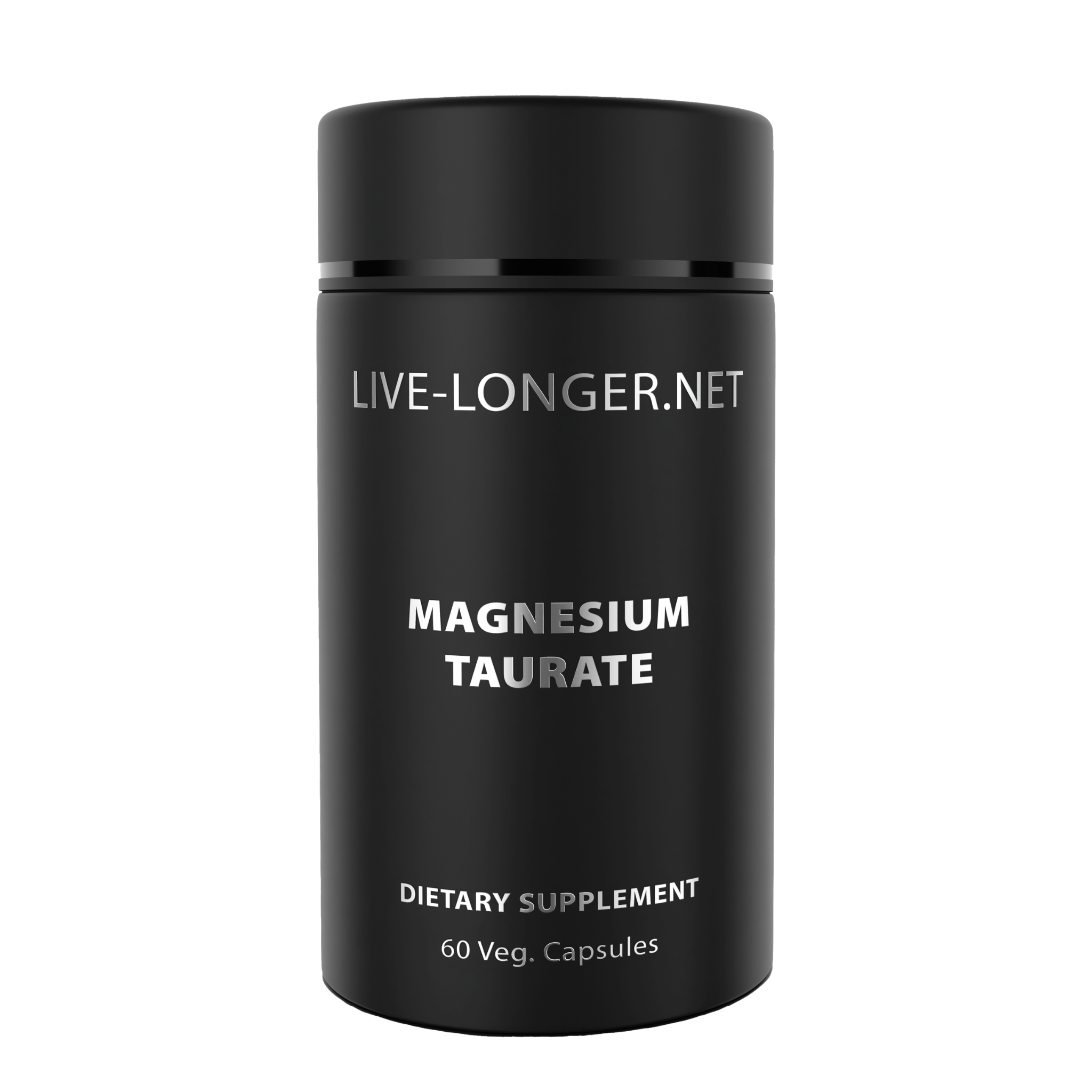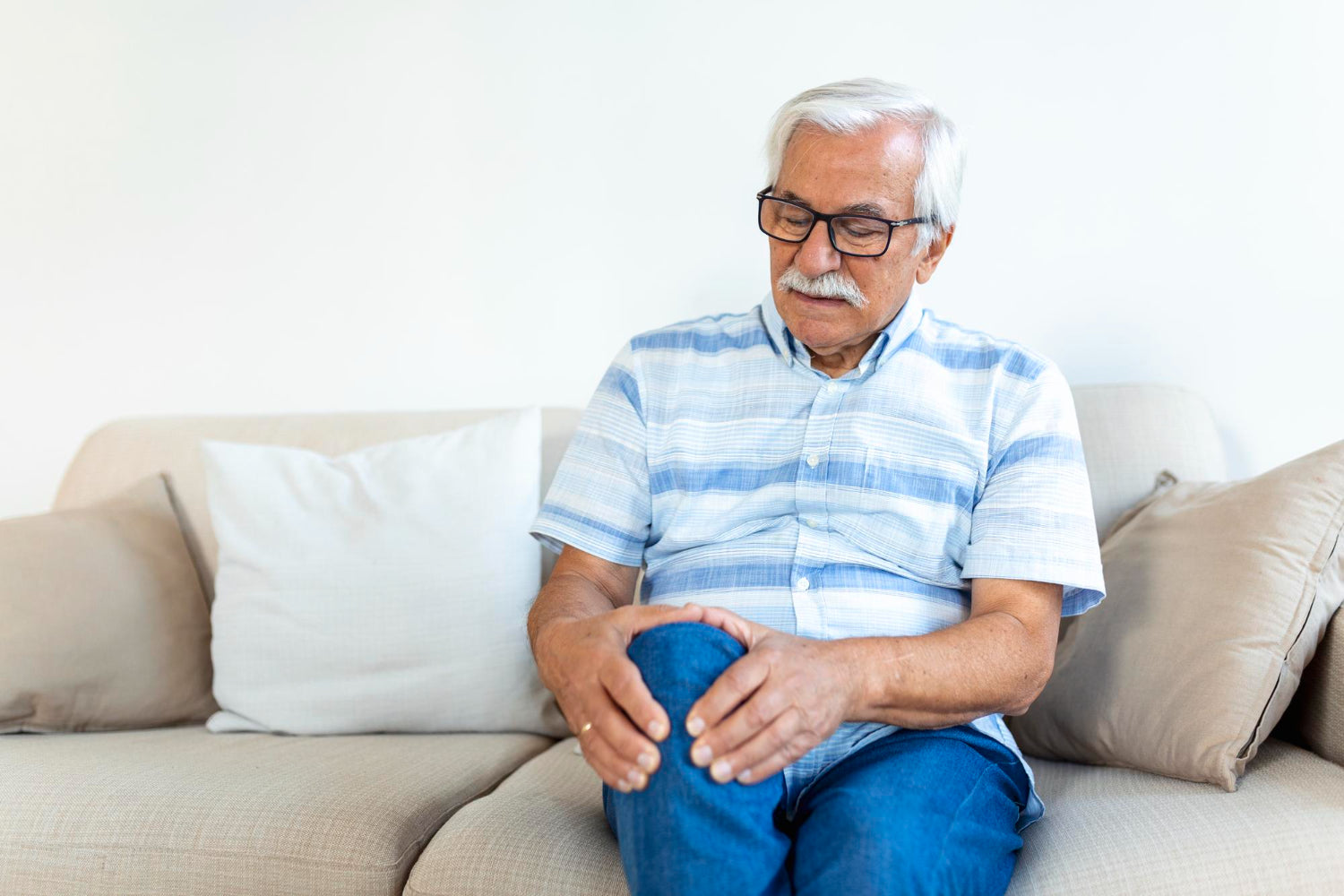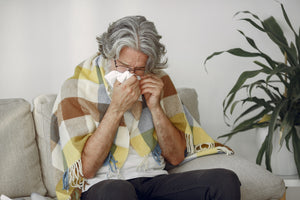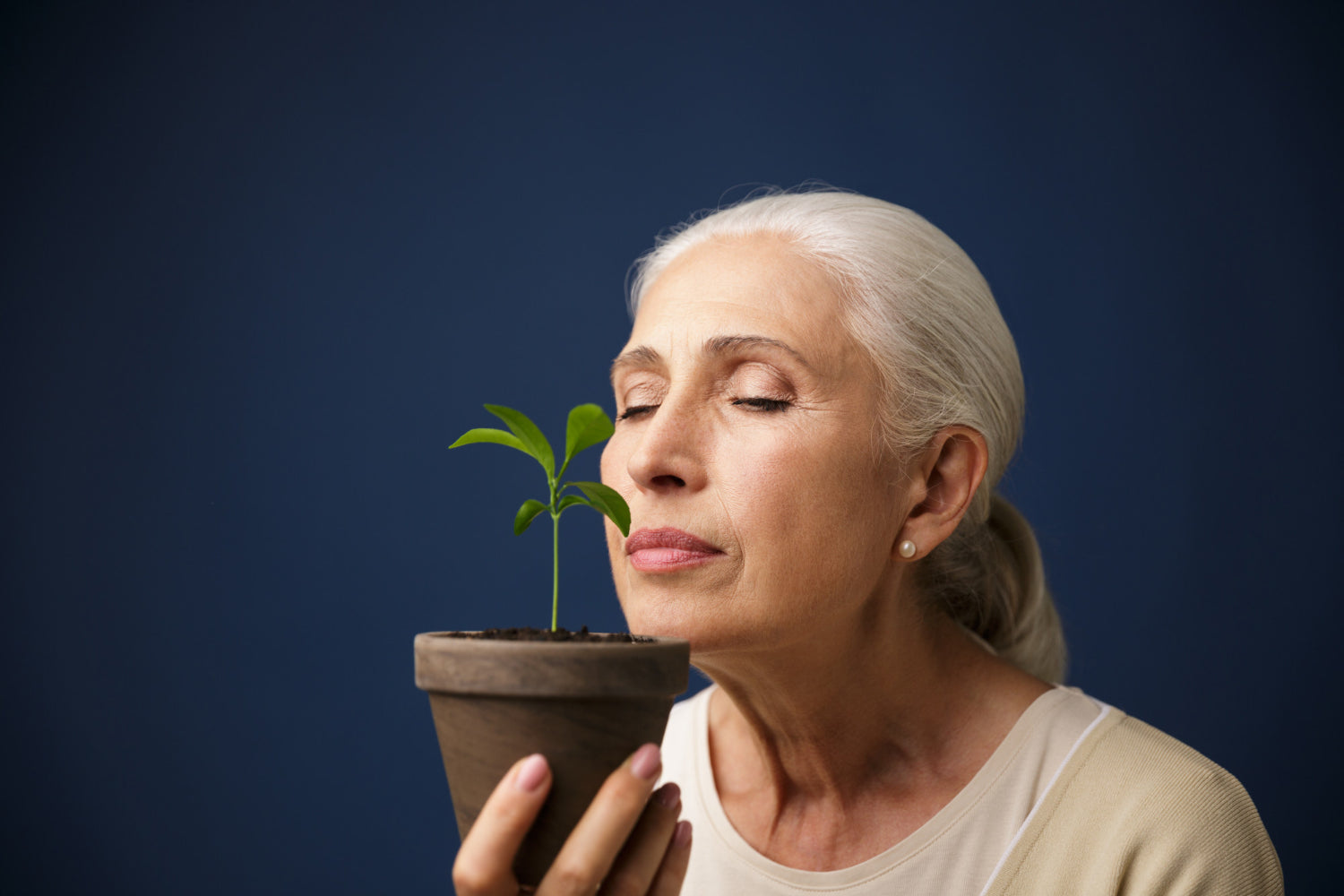According to the latest WHO factsheet, osteoarthritis affects around 500 million people worldwide. Not to our surprise, the statistics also reveal that 73% of the people with osteoarthritis are older than 55 years (1). It is an excruciating condition that limits movements, often restricting us to only our rooms, particularly during our aging years. There are several management options. But almost every one of them deals with the symptoms without removing the underlying cause. That's why we bring you this guide today. In this guide, we will discuss how to relieve your arthritis pain naturally.
So, if arthritis has made your life challenging, read ahead. You will be glad that you did.

Why Arthritis is Common in People of Age?
Arthritis can take many forms, but the one that is common among people of age is osteoarthritis. It is a degenerative disease, so its symptoms worsen over time.
Our joints have protective mechanisms such as cartilage, a special connective tissue that protects against the rubbing of bones during movements. Additionally, joints also have lubricating fluid (hyaluronic acid), which lubricates the in-contact surfaces of the bones and promotes smooth movements.
Unfortunately, with age, these protective mechanisms lose their efficacy, which causes the bone to rub together. Ultimately, people experience increased joint friction, damage, and inflammation.
What are the Common Symptoms of Arthritis?
Osteoarthritis, often abbreviated as OA, commonly affects the joints of the hands, knees, hips, and spine. Its symptoms can vary depending on the affected joints, but they typically include,
Joint Pain: Persistent pain that may worsen with activity and improve with rest.
Stiffness, especially after periods of inactivity or upon waking up in the morning
Swelling is often accompanied by warmth and redness.
Decreased Range of Motion: Difficulty moving the affected joint(s) through their full range of motion may lead to limited flexibility and mobility.
Joint Crepitus: A grating sensation or sound (crepitus) may be felt or heard caused by the roughening of the joint surfaces.
Joint Enlargement: In some cases, the affected joint(s) may appear larger due to the growth of osteophytes (bone spurs) around the joint margins.
Muscle Weakness due to decreased use or altered biomechanics.
Functional Limitations: Osteoarthritis can significantly impact daily activities such as walking, climbing stairs, gripping objects, and performing routine tasks.
How to Relieve Arthritis Pain?
The main goal of treatment for arthritis involves reducing the severity of arthritis pain and boosting overall joint health. For this purpose, available options are,
1. Over-the-Counter Medications
Over-the-counter medications for the treatment of arthritis pain typically include,
Acetaminophen (Tylenol): It helps relieve mild to moderate pain associated with arthritis. However, it does not reduce inflammation.

Nonsteroidal anti-inflammatory drugs (NSAIDs): These include ibuprofen (Advil, Motrin) and naproxen (Aleve). NSAIDs help reduce pain and inflammation associated with arthritis.
Topical analgesics: Creams, gels, or patches containing ingredients like capsaicin or menthol can help alleviate arthritis pain when applied directly to the affected joints.
2. Supplements
Unfortunately, over-the-counter medicines to relieve arthritis pain come with their share of side effects. Therefore, there is a need for a management strategy that boosts overall joint health and acts as an adversary to degenerative changes in arthritis.
Thankfully, the scientists have been way ahead of us. They have found that different supplements like hyaluronic acid, collagen peptides, apigenin, and berberine help maintain the vitality of joints. In this way, they prevent the development of osteoarthritis in people of age.
If you are interested in clinical studies evaluating the effectiveness of these supplements, read ahead.
3. Lifestyle Modifications
Being overweight or obese is among the top predisposing factors of arthritis in people of age. Therefore, losing weight offers a significant relief of the symptoms (2). Additionally, mild to moderate physical activity and a healthy diet help boost joint health and provide relief against arthritis (3).
How to Assess the Severity of Your Arthritis Pain?
It is incredibly important to assess whether the treatment is making any improvement, if at all. One way to evaluate that is to assess the severity of arthritis pain before and after the intervention. The American Knee Society Score and the Visual Analogue Score are two common methods used for this purpose.
American Knee Society Score (AKSS)
The American Knee Society Score helps evaluate the condition of knees and how well they function (4). It has two main components: the Clinical AKSS, the "Knee Score," and the Functional AKSS, or "Function Score."
The Clinical AKSS focuses on the physical examination of the knee. It assesses three key areas: pain, stability, and range of motion. Pain is given a maximum of 50 points, stability 25 points, and range of motion 25 points. The ultimate goal is to reach a total score of 100 points, which means the knee exhibits no pain, maintains good alignment, and has a good range of motion without any instability.
Functional AKSS assesses the patient's ability to perform specific functional activities such as walking, stair climbing, and getting in and out of chairs.
By combining the scores from both components, healthcare providers can obtain a comprehensive assessment of the severity of arthritis pain and its impact on joint function.
Visual Analogue Scale (VAS)
The Visual Analogue Scale is a simple and widely used method for assessing pain intensity (5). It involves asking the patient to rate their pain on a 10-centimeter line, with one end representing "no pain" and the other end representing "worst possible pain." The patient marks the line at the point that best represents their current level of pain.
The distance from the "no pain" end of the line to the patient's mark is then measured and recorded as the pain score, typically ranging from 0 to 10 or 0 to 100. Higher scores indicate greater pain severity.
Healthcare providers often use the VAS to track changes in pain intensity over time and to evaluate the effectiveness of pain management interventions.
Supplements You Need to Get Relief from Arthritis Pain
Hyaluronic Acid

Hyaluronic acid (HA) is a substance that occurs naturally in the human body and is found in connective tissues. It plays several important roles in the body. Two of the most important ones include the lubrication of joints and the promotion of tissue repair. Additionally, clinical studies also support the role of oral supplementation of HA in patients with osteoarthritis.
For example, in a clinical study, patients treated with oral hyaluronic acid supplements experienced a significant increase in the American Knee Society Score (AKSS) and a substantial reduction in the visual analog scale (VAS) for pain (6).
Another study revealed that hyaluronic acid improves pain and function in osteoarthritis patients when taken as an oral supplement for a period of 3 months (7).
Furthermore, the results of a one-year, prospective randomized study indicate that oral administration of hyaluronic acid (HA) may improve the symptoms of knee osteoarthritis (OA) in patients aged 70 years or younger when combined with quadriceps strengthening exercise (8).
Collagen Peptides
Collagen is a protein present in different parts of your body, from your delicate eyes to the tough cartilage in your joints. Just like any other protein, collagen is also made up of amino acids, building blocks of proteins. Therefore, it was hypothesized that oral supplementation with collagen peptides provides the body with a rich source of those amino acids needed to rebuild joint cartilage.
Remarkably, collagen peptides have shown positive results in clinical trials related to joint health, including decreased joint pain, increased mobility, and structural joint improvements (9).
Apigenin
Apigenin is a natural flavonoid compound found in a variety of plants. According to a clinical study, it shows potential as a therapeutic agent for arthritis by reducing inflammation and protecting cartilage, ultimately promoting favorable joint health and function (10).
Berberine
Berberine is a natural plant product known for its anti-inflammatory properties.
In a study, berberine was found to reduce damage to joint structures like bones and cartilage and osteophyte formation in people with osteoarthritis. Another study also revealed similar benefits of berberine on joint health (11). These findings clearly state that berberine is an effective supplement in your fight against arthritis pain (12).
In A Nutshell
Arthritis is a painful condition that is particularly common in the aging population. In addition to debilitating pain, it also causes pain and inflammation in joints. All of which limit people's activities, often restricting them to only a single room.
Sounds frustrating, right?
Thankfully, with the right decisions, you can boost your joint health and prevent the degenerative joint changes you may experience with the passing years.
You can start with lifestyle modifications like losing weight, exercising, and eating a balanced and healthy diet. Supplements like hyaluronic acid, collagen peptides, apigenin, and berberine also help you eradicate arthritis pain from its root.
These strategies provide pain relief, reduce other symptoms, and slow down progression, ultimately improving the quality of life.
So, don't let joint discomfort hold you back. Start using these supplements and get back to doing what you love, pain-free.
References
- Osteoarthritis [Internet]2023. [2024/02/06/10:08:36]. Available from: https://www.who.int/news-room/fact-sheets/detail/osteoarthritis.
- Magliano M. Obesity and arthritis. Menopause International. 2008;14(4):149-54.
- Messier SP, Legault C, Mihalko S, Miller GD, Loeser RF, DeVita P, et al. The Intensive Diet and Exercise for Arthritis (IDEA) trial: design and rationale. BMC musculoskeletal disorders. 2009;10(1):1-14.
- Martimbianco AL, Calabrese FR, Iha LA, Petrilli M, Lira Neto O, Carneiro Filho M. Reliability of the "American Knee Society Score" (AKSS). Acta Ortop Bras. 2012;20(1):34-8.
- agun M, Adedoyin, RA, Anifaloba R. Reliability and concurrent validity of visual analogue scale and modified verbal rating scale of pain assessment in adult patients with knee osteoarthritis in Nigeria. South African journal of physiotherapy. 2003;59(2):12.
- Ricci M, Micheloni GM, Berti M, Perusi F, Sambugaro E, Vecchini E, et al. Clinical comparison of oral administration and viscosupplementation of hyaluronic acid (HA) in early knee osteoarthritis. MUSCULOSKELETAL SURGERY. 2017;101(1):45-9.
- Nelson FR, Zvirbulis RA, Zonca B, Li KW, Turner SM, Pasierb M, et al. The effects of an oral preparation containing hyaluronic acid (Oralvisc®) on obese knee osteoarthritis patients determined by pain, function, bradykinin, leptin, inflammatory cytokines, and heavy water analyses. Rheumatology International. 2015;35(1):43-52.
- Tashiro T, Seino S, Sato T, Matsuoka R, Masuda Y, Fukui N. Oral Administration of Polymer Hyaluronic Acid Alleviates Symptoms of Knee Osteoarthritis: A Double-Blind, Placebo-Controlled Study over a 12-Month Period. The Scientific World Journal. 2012;2012:167928.
- Larder CE, Iskandar MM, Kubow S. Collagen Hydrolysates: A Source of Bioactive Peptides Derived from Food Sources for the Treatment of Osteoarthritis. Medicines [Internet]. 2023; 10(9).
- Ji X, Du W, Che W, Wang L, Zhao L. Apigenin Inhibits the Progression of Osteoarthritis by Mediating Macrophage Polarization. Molecules. 2023;28(7).
- Li J, Wang Y, Chen D, Liu-Bryan R. Oral administration of berberine limits post-traumatic osteoarthritis development and associated pain via AMP-activated protein kinase (AMPK) in mice. Osteoarthritis and Cartilage. 2022;30(1):160-71.
- Wong SK, Chin K-Y, Ima-Nirwana S. Berberine and musculoskeletal disorders: The therapeutic potential and underlying molecular mechanisms. Phytomedicine. 2020;73:152892.


